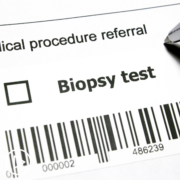Understanding MRD and What It Means for Myeloma Patients
Understanding MRD and What It Means for Myeloma Patients from Patient Empowerment Network on Vimeo.
Myeloma expert Dr. Melissa Alsina, of Moffitt Cancer Center, provides an explanation of minimal residual disease (MRD) and how she uses MRD in patient care.
Dr. Melissa Alsina is an associate professor of medicine in the Blood and Marrow Transplant Program at Moffitt Cancer Center in Tampa, Florida where she also serves as head of the Multiple Myeloma Transplant Program. Learn more about Dr. Alsina, here.
Related Programs:

|

|

|
Transcript:
Katherine:
What is MRD, and what does it mean for patients?
Dr. Alsina:
So, MRD stands for minimal residual disease. So, it means that if a patient is in complete remission, what it would mean is that I don’t see any myeloma cells in the bone marrow and I don’t see an M spike. The M-spike is zero in the blood and in the urine, and the light chains are fine.
But even with that, there maybe be some disease that is residual that I can’t see by conventional methods, so there’s two methods that have been developed that are able to detect one cancer cell in a million cells.
Katherine:
Wow.
Dr. Alsina:
So, if I have a patient that is in complete remission, I can use one of those methods to look, and that will tell me if the patient still has minimal residual disease or not.
So, the reason why it is important is because there are many studies that have shown that if I can get a patient to be minimal-residual-disease-negative, no evidence of disease by those two tests – that I can explain a little bit more if you want – then those patients are going to do better, their response is going to last longer, and the patients are going to live longer.
So, nowadays, with our better treatments, we use also that as a goal. We say okay, I not only want to get a patient in a complete remission, I want to get that patient to MRD negativity.
And we do adjust our therapy to get there. As an example, I can do a transplant in a patient, and three months after transplant, I look at that minimal residual disease. If it’s negative, then I do Revlimid (lenalidomide) maintenance, which would be standard of care. If it’s positive, I use two drugs to try to get that patient to that MRD-negativity level, and there are many studies right now looking at how to adjust our treatment based on response.










